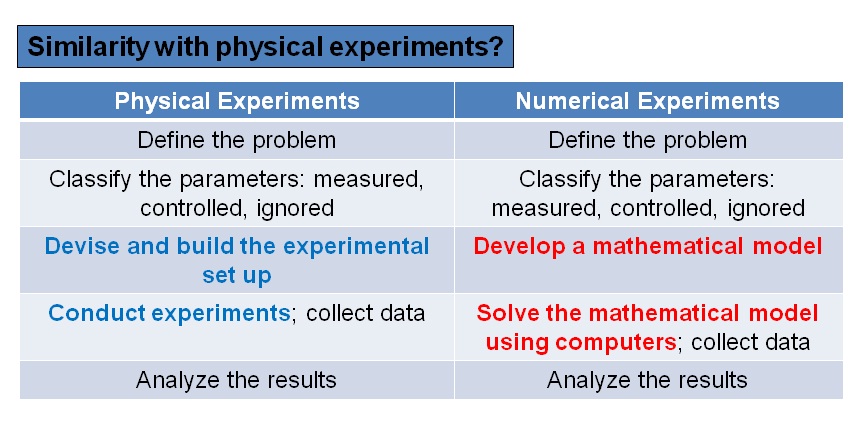Numerical experimentation
Use of mathematical model to understand flame characteristics under certain controlled conditions. It mimics a real-life situation.

Necessary tools
-
Elements of mathematical model:
- Equations (also called governing equations) that describe behavior of the system under consideration.
- Auxiliary equations (also called boundary conditions) that describe how the system can be modified.
- Methods and algorithms to combine the above two elements in order to obtain numeric data for a given set of conditions.

Definition of the problem
-
Importance of laminar premixed flame:
- Simplest of the flame configurations
- Essential for understanding of practical combustion systems
- Model problem for combustion
-
Typical configuration:
- Flame is situated in a flowing mixture of methane fuel and atmospheric air.
- Far away from the flame to the left, no reaction occurs -> cold boundary.
- Reactions and heat release occurs in a narrow region.
- To the right, only products exist at high temperatures.

-
Problem Definition
- Model the behavior of flame in response to changes in equivalence ratio.
- Describe flame structure; calculate burning velocity at three equivalence ratios.
- During the combustion process:
- The components and heat are transported from flame zone to other locations.
- Mass diffusion and heat conduction occur predominantly near the flame.
- Governing equations should reflect these physical processes in terms of
- Physical laws of motion (Newton's laws)
- Energy (first law of thermodynamics)
- Mass conservation
-
Our task:
- Apply these principles to a reacting flow process.
- Take into account the simplifying assumptions.
- Build a model of the laminar premixed flame.
© Virtual Combustion and Atomization Lab, IIT Kanpur









